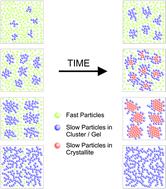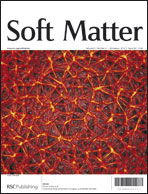We present a study of the evolution of structural properties and dynamical behaviour of colloidal complex systems, as seen by two techniques working on two different length scales. Our system consists of a binary mixture at high volume fraction of internally crosslinked polystyrene microgels dispersed in an organic solvent. In this colloidal binary mixture the total polydispersity of the system has been artificially increased in order to “tentatively” suppress crystallization. We have studied concentrated repulsive and attractive systems. In the first case, the colloidal particles have a ‘nearly’ hard sphere interaction. In latter case, we have introduced an attractive interaction via Asakura-Oosawa potential using free linear polymer added to this system. We characterize the mechanical properties applying dynamic light scattering based optical microrheology at the microscopic level, and mechanical bulk rheology at the macroscopic level. We compare the results obtained by both techniques finding, under certain conditions, discrepancies attributed to existing heterogeneities. Analyzing the observed discrepancies, we propose a qualitative model of structural and dynamical evolution of the studied systems.

You have access to this article
 Please wait while we load your content...
Something went wrong. Try again?
Please wait while we load your content...
Something went wrong. Try again?


 Please wait while we load your content...
Please wait while we load your content...